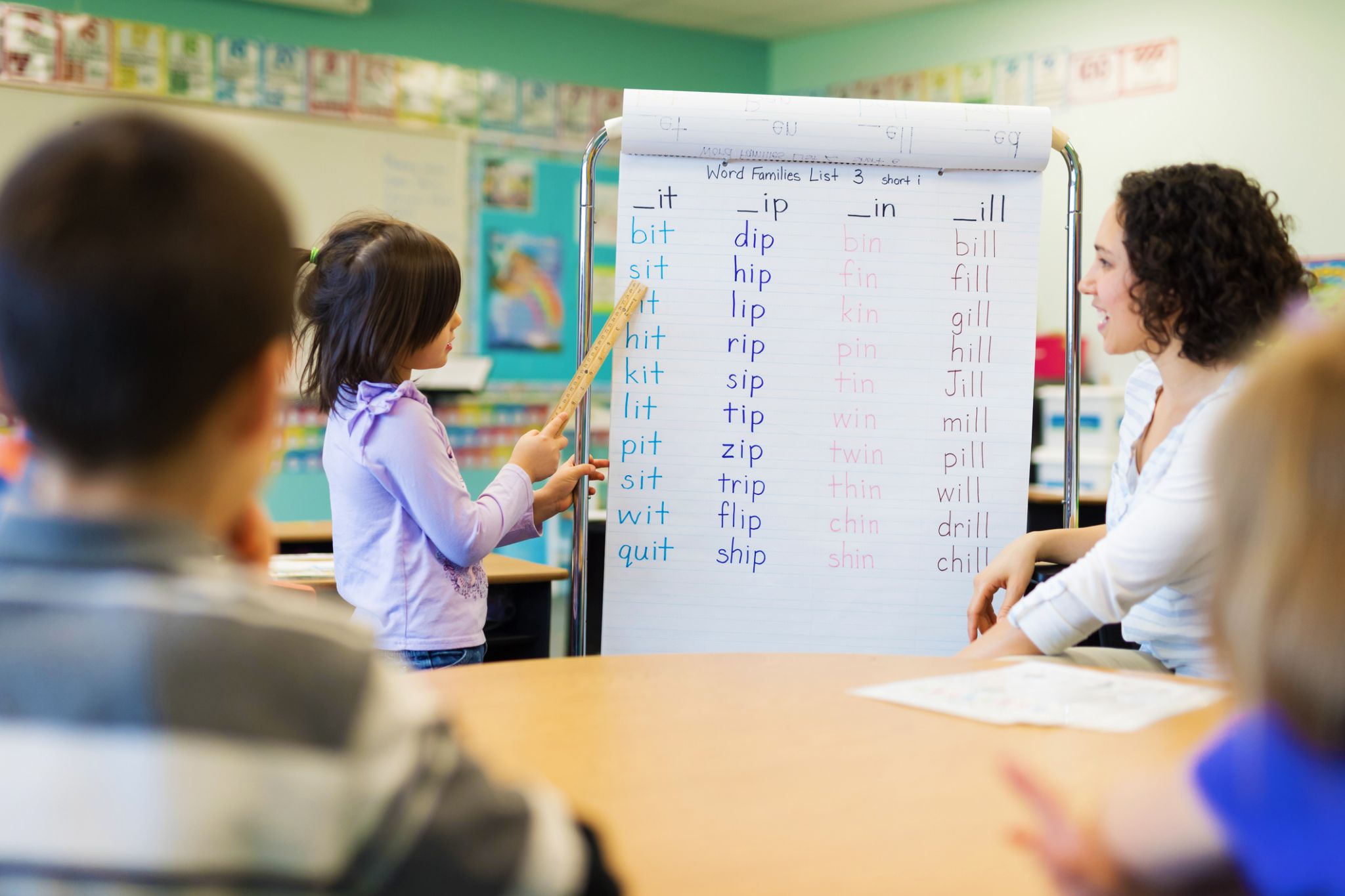Many of us grew up with a spelling test every Friday; 20 or so unrelated words that we would memorize long enough to pass the test. This experience shapes what we do as teachers and we are often led to believe that if children could read a word, they could spell it. However, this is often not the case. To read text, a child must attach sounds to printed letters. For example, they see the letters c-a-t and must match the sounds /c/ /a/ /t/ and then blend them together to read the word. In order to spell, a child must translate spoken words into individual sounds, recall the symbol needed, and then produce the written symbols. This is a challenging process and can be further complicated when one sound can be spelled in multiple ways. Spelling is actually more difficult than reading as there are many variations of how one phoneme or sound can be represented in print.
Spelling depends on many of the same concepts as reading, including phonological (sound) and orthographic (written language) knowledge. Reading and spelling, however, are not just inverse operations. The reader uses his phonological awareness skills to segment words into their sounds and then must decide how these sounds are mapped to print. Due to the many ways sounds can be spelled, sound-to-spelling translation is not always simple or straightforward. For example, the phoneme /k/ can be represented by the letters (graphemes) k, c or ck. In words of Greek origin, /k/ can be spelled with the grapheme ch as in chemistry. Also, word recognition and decoding require recognizing printed words, while spelling requires accurate recall of letter patterns and words.
Research shows the interconnection between reading and spelling. Spelling difficulties, like reading problems, are based on underlying language weaknesses. The science of reading emphasizes that the ability for a young student to read a word “by sight” depends heavily on their ability to connect letters and letter combinations to sounds automatically and efficiently. For spelling, this is dependent on the learner’s ability to store a complete and accurate representation of the word in memory. This is not a visual memory process, but rather a language process. According to noted reading researcher Louisa Moats, 84% of English spellings are predictable if you know spelling rules and patterns and other information such as word meaning and language of origin. Learning to spell is done by systematically and gradually teaching the speech sounds and the letters that represent them, which is also critical to accurate and automatic word recognition.
Memories for whole words are formed much faster and recalled much more easily when children have a sense of language structure and receive ample practice writing the words. By developing spelling ability, instructors can instill these critical bits of information and improve a student’s reading.
Almost all children with dyslexia struggle with spelling, which also impacts their written composition. Often a downstream consequence, students with dyslexia will write less and use vocabulary that does not reflect their oral vocabulary or knowledge. Many children with dyslexia can overcome the difficulties associated with reading, but spelling is often overlooked, can persist throughout life, and may require accommodations or task modification. Spelling is also a more visible difficulty, and a source of embarrassment for both children and adults with dyslexia.
The most effective methods of teaching spelling to students with dyslexia include instruction in word structure, origin, and meaning. First, students who struggle with spelling must understand the relationship between sounds and letters. Spelling lessons should be organized to teach a progression of regular spelling patterns, and spelling instruction should complement decoding instruction for reading. Students should learn the word patterns, basic spelling rules and different syllable types in the English language. The students who are able to make the connection between speech sounds and written symbols, who note recurring patterns in syllables, and who recognize morphemes (meaningful word parts such as prefixes, suffixes and roots) are better at remembering whole words. Only 4% of words are truly irregular and must be learned as a whole. The remaining irregular words only have a part of the word that is irregular. Instructors can systematically introduce words that contain irregular patterns.
We can make a difference. Hill Learning Center is dedicated to transforming students with learning differences and challenges into confident, independent learners. Contact us if you’re interested in taking the next step.
Sources: IDA, NCBI, Reading Rockets
